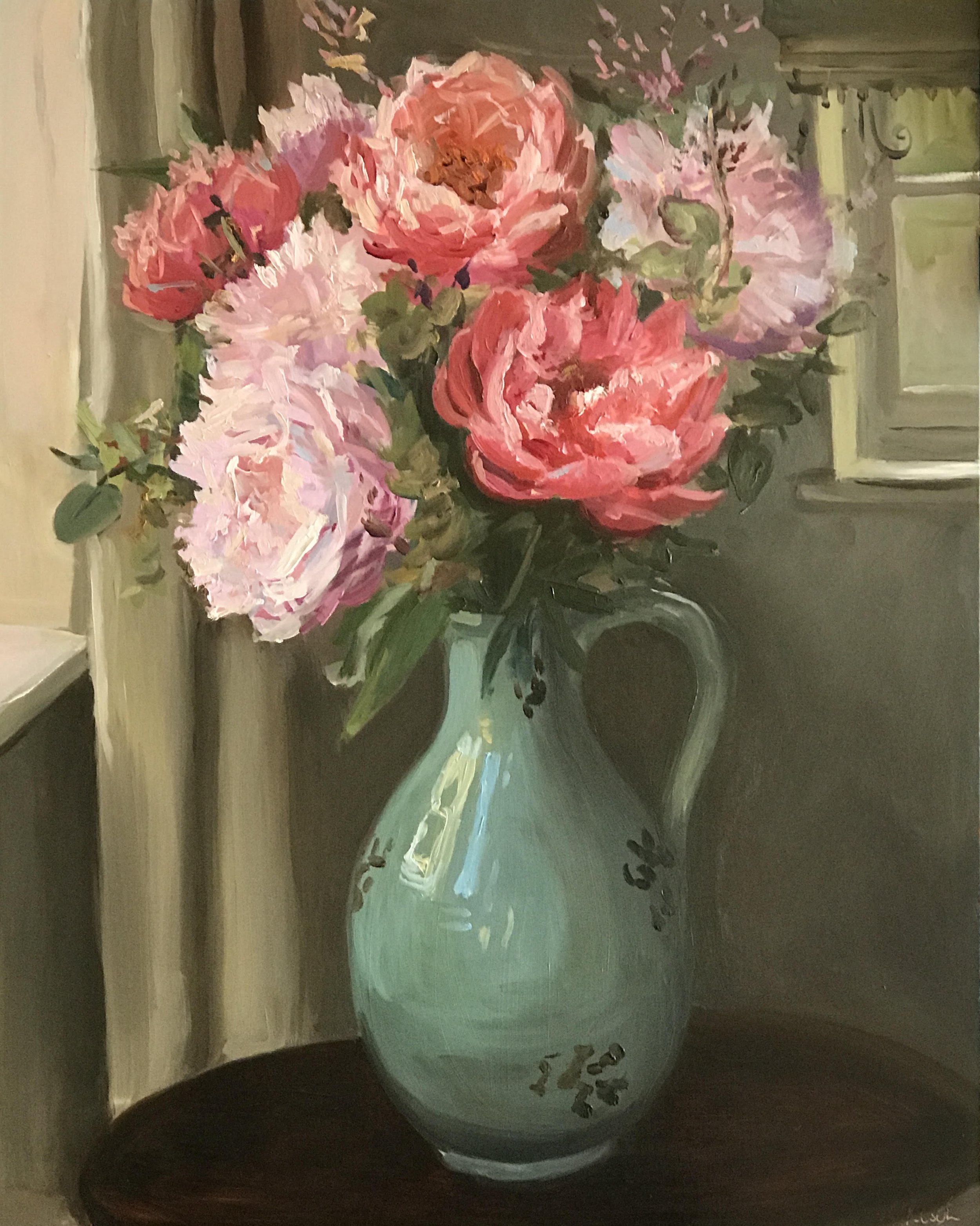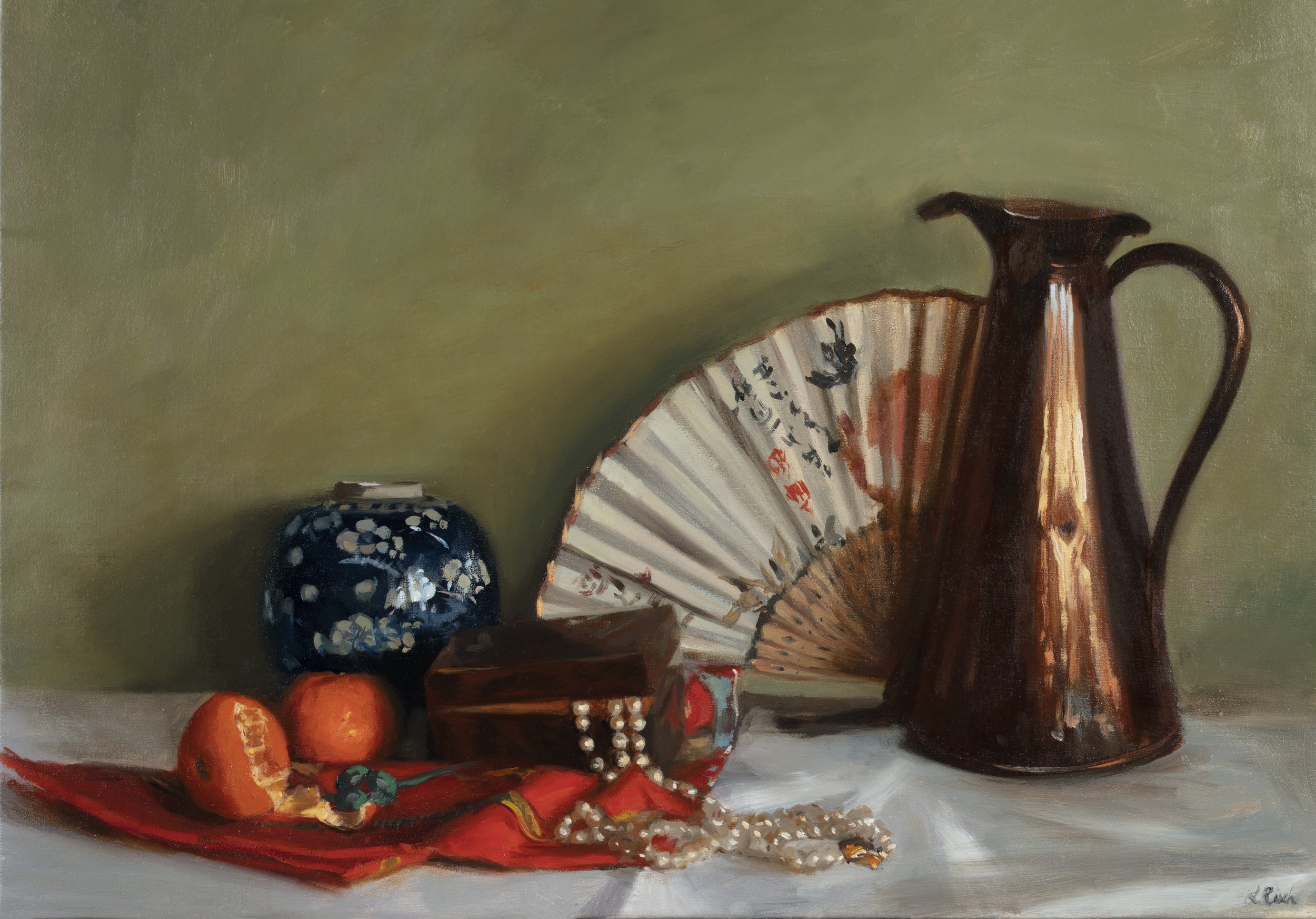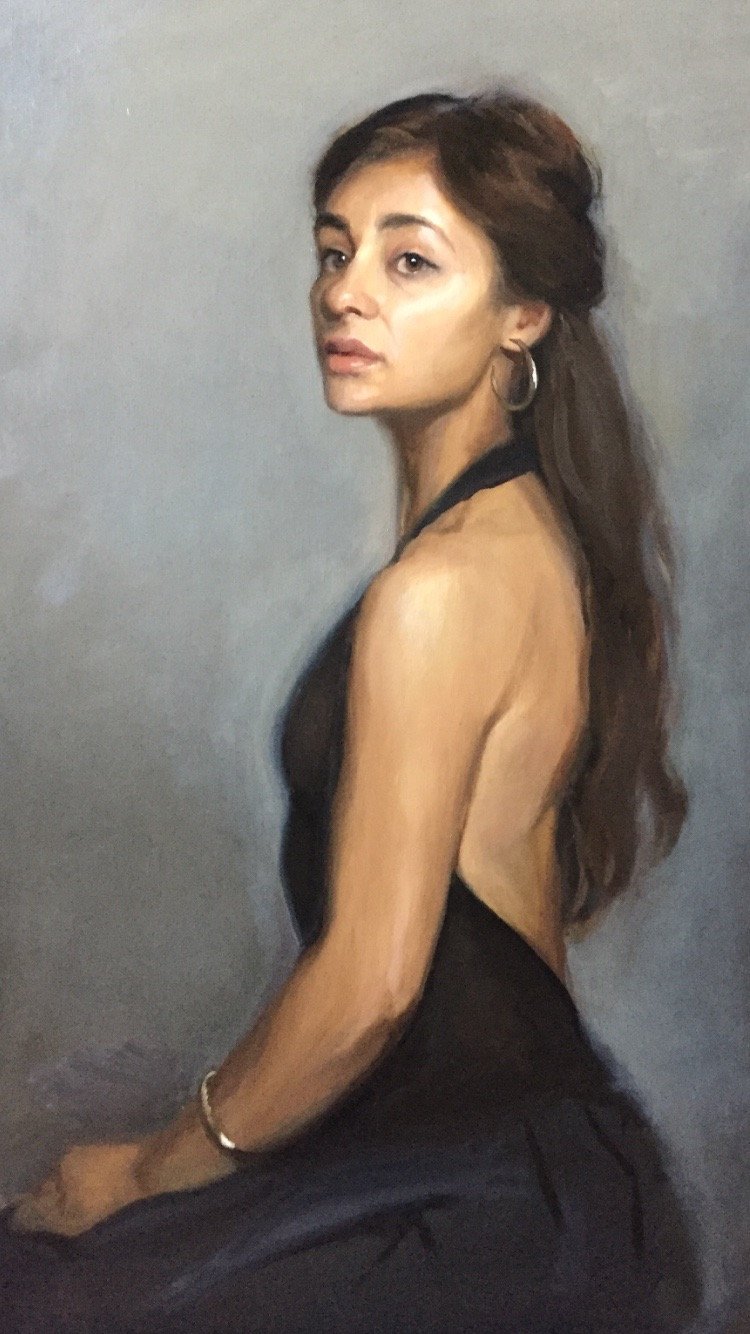ARTIST INTERVIEW: Louisa Risch
Louisa Risch
Please introduce yourself. What was it that sparked your interest in fine art?
I’m a classically-trained painter, having learnt to paint portraits from a distance under the tutelage of Charles Cecil in Florence. I have taken this very in depth training to garner my own looser approach to paint, using focus and impastos to celebrate beauty in nature.
For me, there is nothing more satisfying than managing to characterise someone or something with a single well placed brush mark, or ‘nailing’ a specific colour that is found in nature. I have always had a fascination with faces and expressions. Sometimes I just see someone I have to paint, simply because their jawline is such an interesting angle, or their nose has a perfect bump! I once begged a beautiful friend of mine, (who has the most perfect cheekbones) to come and sit for me at the studio for a succession of wine fuelled sittings!
I also love to paint everyday objects, such as fruit or flowers. We so often overlook the beauty of everyday objects; which I am convinced is because we are so engrossed in our phones!
I spent two weeks landscape painting in Provence with the artist, Julian Merrow Smith. That really ignited my passion for still life and landscape painting. He is such an inspiration; his paintings have very few marks, but those marks always characterise the thing he is painting perfectly.
How did you develop your passion and turn it into a career?
I think the problem with art schools these days is that they don’t teach you the ‘business’ side of becoming a professional artist, they only teach you how to make the art that you want. The business side is something you have to figure out on your own. Once I was sure I wanted to become an artist, I threw myself into it; applying for competitions, taking on commissions, visiting galleries, getting a studio and then moving on to both solo and joint shows. I think it took a lot of consistency at the beginning, and a very thick skin, but it is only now with several years of experience that I am starting to feel confident from a ‘business’ perspective!
Why have you chosen to work in oils? How does your medium reflect the narrative?
Oils for me are the absolute best material. Firstly, I adore the smell and the physicality of it as a medium, but secondly from a practical standpoint, it means I can continue to change and adapt paintings until they are dry. I love the process of pulling painting off, moving it around, and reapplying it until it is exactly as I want it. You don’t get this with any other medium, other than maybe clay, but I’m not sure my mind can stretch to 3D work; I’m such a ‘painter’, it just trumps all other forms of art for me!
How have old masters in art influenced your own work?
There is no more sure fire way for me to feel completely inadequate as a painter than to spend a day in a gallery amongst the old masters. They really were called ‘masters’ for a reason! Their compositions, their accuracy, their use of colour and narrative, their use of chiaroscuro. I am consciously or subconsciously influenced by the old masters in every painting I make, especially given the formative years of my training were based around their teachings.
As well as portraiture, you’re also interested in Still Life painting in an ‘ala prima’ expressionist technique. Why is this? What is the significance of the subjects you choose to capture?
Still life painting is a huge part of my practice. I’m drawn to everyday objects that spark something in me. In the same way that I am drawn to a certain aspect of a face, there will be something about the way the light hits a petal, or the colour of a highlight at a particular time of day that inspires to paint a still life. I love pairing certain colours together; blue and orange, red and blue. They are fun, happy pictures that I hope draw the viewer in, and invite them to take interest in everyday objects that perhaps they would normally overlook.
What has been your favourite subject to draw/paint? Is there a specific scene that you would like to capture in the near future?
I love to oscillate between portraits, still lives and landscapes. I couldn’t choose my favourite! My husband is cheesily a favourite muse of mine, and I love painting in Provence. There is something about the light there that just keeps drawing artists back, and once you have painted there, you can understand why!
If you could own an original painting from any artist, which would it be, and why?
It would have to be a Sorolla. He is just the master of light! I also love the Manet painting that is hanging at the Courthauld gallery called ‘A Bar at the Folies-Berger.’ Nothing in it makes sense from a perspective point of view, but the expression on the bar girl’s face is so arresting. It also reminds me of Las Meninas, another favourite painting of mine by Velasquez.
Why do you think art is important in society?
Art is a way to express yourself, in whatever form that may take. Historically it is hugely important, it is because of art that we have a tangible, evident history, but for me, most importantly, it transcends any language barrier, and can be understood by all. It literally brings our ideas and feelings into reality with greater cultural appreciation.








